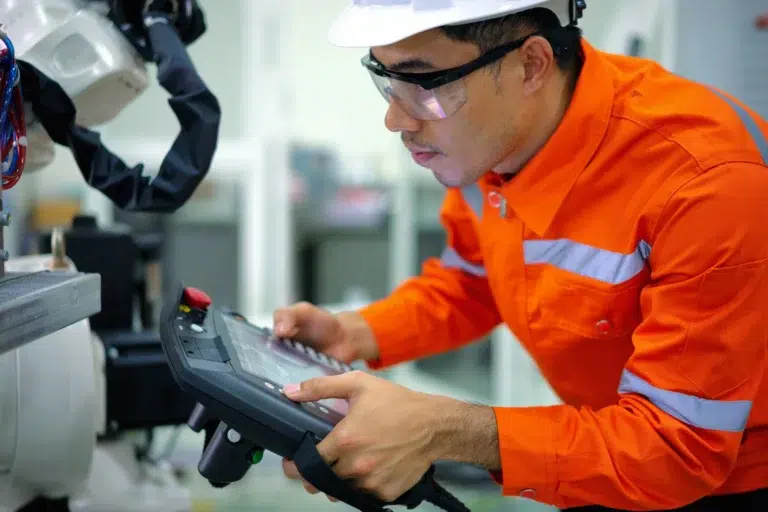Reweaving the fabric of fashion: how GenAI can help clean up fashion value chains

Director, Digital Product Creation at VF Corporation

Principal Business Designer
Fashion has always been about making a statement. Historically, it’s been about style, individuality, and breaking boundaries. But as we find ourselves in a world grappling with environmental challenges, fashion’s statement is taking on a new hue: sustainability. We present a positive way of using Generative AI in fashion, to help solve specific problems in the fashion value chain.
Here are three ways that brands should be leveraging Generative AI in their organizations.
- Reducing shipping and CO2 emissions through optimized supply chains
- Reducing water usage through smart materials choices in design, materials, and finishing
- Reducing overproduction through close-to-market, data-driven product lines and just-in-time manufacturing (Sell, then make)
I have a number of missions. One of them is to change the fashion industry so that we make it much more sustainable; to shift from the current over-production approach, to a people & planet-focused approach. We need a local-for-local model; one where products are digitally designed by local talent, raw materials are taken all the way to finished goods both in-region and in a worker-friendly manner, and where the products are sold in-region at an affordable price-point
Joshua Young, Director Digital Product Creation, VF Corporation
1. Reducing shipping and CO2 emissions through optimized value chains
The way we transport garments makes a big difference; shifting 1% of garment transportation from ships to air generates 35% more CO2 emissions. A similar logic applies for cutting transport distances and eliminating unnecessary back-and-forth.
Generative AI goes beyond designing concepts and has the power to reconfigure supply chains, promoting sustainable practices that are environmentally conscious and economically optimized.
Consider a typical, current approach to material sourcing. Cotton is grown in the southern United States, shipped to Turkey for fabrication, then forwarded to Bangladesh for finished goods production, before finally making its way to European markets for sale. This pathway is not only time-consuming but also generates enormous waste. The convoluted journey of cotton, traveling continents, leaves an environmental footprint that can’t be ignored.
Now, let Generative AI crunch the numbers, analyze geographical data, production capacities, and consumer preferences. AI would suggest a more efficient and sustainable alternative: source North African cotton, manufacture it in Ethiopia (a neighboring region), and then ship directly to Europe. This shortens the travel distance, optimizing costs and reducing carbon footprints.
Taking a page from the same book, AI could recommend growing cotton in the US and manufacturing products in Mexico, catering to the North American market. This keeps production regional and minimizes extensive shipping. Plus, with insights about regional preferences – roomy and minimalistic designs for the American audience versus tighter, vibrant patterns for Europeans – brands can tailor their production accordingly. This approach not only cuts down on waste but also ensures that products are crafted closer to their intended markets, keeping the fashion pulse synchronized with regional preferences.

2. Reducing water usage through smart materials choices in design
Material sustainability is a hotly debated topic with many differing views on how to reduce the impact of our material supply chain on the planet. Experts point to synthetic fibers as a significant problem based on chemical usage in production, microfiber creation, and non-renewable raw materials such as petroleum.
However, many people are also concerned about the use of cotton due to the amount of water required in both the growing and finishing process. Often quoted on the internet is: “It takes 2700 liters of water to create one cotton t-shirt; the equivalent of one individual’s drinking water for 3 years”. Some claim that this is an old statistic and that modern techniques have cut that number in half or more. Regardless, that’s still a lot of water for a t-shirt and there are ways to mitigate this impact.
This blog post does not claim to provide a definitive answer to these questions, but we can call out a few things that can dramatically improve the situation. While the cotton plant is not an inherently thirsty crop, in many places in the world, it’s grown in water-scarce locations using irrigation from local aquifers. That’s going to have a big impact on local water sources. Ideally, cotton should be grown in locations where rainwater can be used as the primary water source combined with highly efficient irrigation methods. Further, in areas where cotton is a poor choice for the previous reasons, farmers should consider crops that produce more fiber per liter of water, such as hemp. AI could be used to indicate the right crop in the right location based on any number of factors such as soil suitability, local irrigation technology, water source, and potential revenue.
Meanwhile, in Mexico, innovation sprouts in the form of cactus leaves. Two brothers have ingeniously crafted leather from the Nopal plant, or more familiarly, the prickly pear cactus. This vegan, low-water leather alternative is not just eco-friendly, but a testament to the endless possibilities of sustainable materials. The fashion industry needs to take note and adapt
Combining digital product creation with Generative AI, the process can be optimized to use the right materials, in the right location, that produce the best performance, with the least footprint, for the lowest cost. Digital Product Creation can be used to design new products or change color, materials, and graphics; then quickly communicate this information to the factory. This reduces time to market, making product more relevant and taking an additional physical component out of the process.
3. Reducing fashion overproduction through GenAI-powered supply and demand matching
The fashion industry has a problem with overproduction, with rates ranging from 30 to 40 percent each season. This has resulted in an increase in outlet stores, which serve as a way for apparel brands to recoup some of the value of excess inventory. However, this approach only addresses the symptoms of a larger issue – a system that overproduces and over-consumes.
While sustainability efforts are growing, academics and activists say they aren’t enough if they don’t lead to reductions in volume. To address this issue, alternative business models such as on-demand manufacturing, resale, and rental are gaining traction. These models can help reduce waste and promote a more sustainable fashion industry. For businesses looking to make a difference, adopting these practices can be a step in the right direction.

What if, through digital advances like 3D modeling, consumers could virtually try apparel, ensuring perfect fits and reducing returns? We could envision a future where secure body data storage, like Apple’s Health app, could be seamlessly shared with vendors, ensuring optimal size recommendations.
Consider this: stores need to keep extra inventory just for display to catch your eye, and to have various sizes and colors in stock. They also have to deal with cleaning and transporting inventory to stores, as well as disposing of unsold items.
You've gotta manufacture a whole season's product line all at the same time. And then you ship it out and then it kind of sits in the store for that season and then that's done. If you had a production system that was much closer to market, let's say three to six months, if you were following the trends more closely, if you had the ability to react, if you saw something starting to sell, you could ramp up production. If you saw something that wasn't selling, you could ramp down production much more quickly and really manage your overproduction. That would be both much more profitable and it would also reduce the impact of the fashion industry dramatically.
Joshua Young
What if you could instead try on a digital prototype? Digital products now have higher resolutions, and everything from stretch to color, shimmer, and shine is contained in the file. All that’s needed is a file of your body – both hard body (height) and soft body (where your body ‘squishes’) – and motion (your range of motion). Imagine having this information contained within the privacy of your Apple ID or Samsung account. You could try on various clothes digitally, either at home or in a store, and this could inform what brands should produce. The clothes could then be shipped to your home, enabling just-in-time manufacturing.
Innovating across B2B value chains
These three recommendations could not only slash fashion’s water and materials usage and CO2 emissions, but also improve fashion’s margins.
A 24-month or 18-month process is very expensive because of all of the time, people and work that has to go into maintaining that entire production. Whereas if you're on a much shorter timeline, you store less inventory, so you need less space, you pay less for shipping, because it's not just the end product that needs to be shipped, it's the materials that have to be shipped all around the world as well.
Joshua Young
Fashion is in dire need of transformation. If brands continue on their current trajectory, they risk becoming obsolete. Yet, for genuine innovation, industries must bridge gaps and create collaborative business models that incentivize every player.
Innovating across value chains is difficult. Innovation can only happen through coordinated collaboration with your customers and suppliers, so that new business models that work for all emerge. Otherwise, it’s on one company to transform the whole system – an ineffective strategy that we just don’t have time for.
At Board of Innovation we’re used to bringing companies across the value chain together to innovate towards sustainable value, whether that’s just you and your suppliers, or helping entire consortia work together to reach new sustainable outcomes.
We’ve championed innovation alongside giants like H&M, Levi’s, and Pandora, and collaborated across the value chains with the likes of Bayer, Amazon, and Vanderlande.
The secret to catalyzing this success is to get concrete, define value propositions along the value chain and get to testing and iterating.
Curious about it?
Have a chat with us and let’s discuss how you can develop sustainable business models.
Join us at our virtual Autonomous Innovation Summit to discover how AI is changing the way we innovate, operate and design – and how businesses can transform to thrive in this autonomous world.


